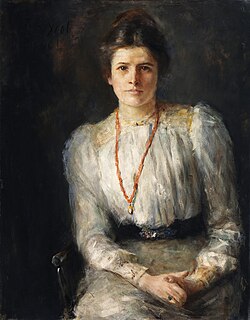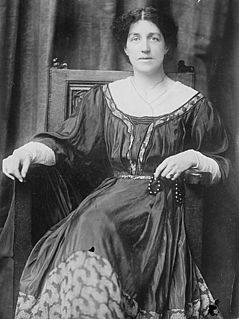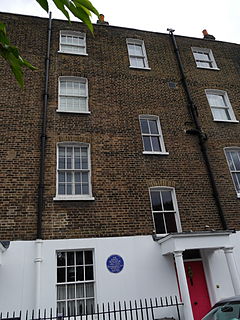
William Morris was a British textile designer, poet, artist, novelist, translator and socialist activist associated with the British Arts and Crafts Movement. He was a major contributor to the revival of traditional British textile arts and methods of production. His literary contributions helped to establish the modern fantasy genre, while he helped win acceptance of socialism in fin de siècle Great Britain.

The Arts and Crafts movement was an international trend in the decorative and fine arts that developed earliest and most fully in the British Isles and subsequently spread across the British Empire and to the rest of Europe and America.

Sir Edward Coley Burne-Jones, 1st Baronet, was a British artist and designer associated with the Pre-Raphaelite movement, who worked with William Morris on decorative arts as a founding partner in Morris, Marshall, Faulkner & Co.

Hammersmith is a district of west London, England, 4.3 miles (6.9 km) southwest of Charing Cross. It is the administrative centre of the London Borough of Hammersmith and Fulham, and identified in the London Plan as one of 35 major centres in Greater London.

Kelmscott is a village and civil parish on the River Thames in West Oxfordshire, about 2 miles (3 km) east of Lechlade in neighbouring Gloucestershire. Since 2001 it has absorbed Little Faringdon, which had been a separate civil parish. The 2011 Census recorded the merged parish's population as 198.

Kelmscott Manor is a limestone manor house in the Cotswolds village of Kelmscott, in West Oxfordshire, southern England. It dates from around 1570, with a late 17th-century wing, and is listed Grade I on the National Heritage List for England. It is situated close to the River Thames, and it is frequently flooded. The nearest town is Lechlade-On-Thames.

The Kelmscott Press, founded by William Morris and Emery Walker, published fifty-three books in sixty-six volumes between 1891 and 1898. Each book was designed and ornamented by Morris and printed by hand in limited editions of around 300. Many books were illustrated by Edward Burne-Jones. Kelmscott Press books sought to replicate the style of 15th-century printing and were part of the Gothic revival movement. Kelmscott Press started the contemporary fine press movement, which focuses on the craft and design of bookmaking, often using hand presses. While their most famous books are richly decorated, most Kelmscott Press books did not have elaborate decoration, but were published simply.

Susan Mary "Lily" Yeats was an embroiderer associated with the Celtic Revival. In 1908 she founded the embroidery department of Cuala Industries, with which she was involved until its dissolution in 1931. She is known for her embroidered pictures.

Jane Morris was an English embroiderer in the Arts and Crafts movement and artists' model who embodied the Pre-Raphaelite ideal of beauty. She was a model and muse to her husband William Morris and to Dante Gabriel Rossetti. Her sister was embroiderer and teacher Elizabeth Burden.

Mary "May" Morris was an English artisan, embroidery designer, jeweller, socialist, and editor. She was the younger daughter of the Pre-Raphaelite artist and designer William Morris and his wife and artists' model, Jane Morris.

Morris, Marshall, Faulkner & Co. (1861–1875) was a furnishings and decorative arts manufacturer and retailer founded by the artist and designer William Morris with friends from the Pre-Raphaelites. With its successor Morris & Co. (1875–1940) the firm's medieval-inspired aesthetic and respect for hand-craftsmanship and traditional textile arts had a profound influence on the decoration of churches and houses into the early 20th century.
Retreat or re-treat may refer to:

Sir Francis Ronalds FRS was an English scientist and inventor, and arguably the first electrical engineer. He was knighted for creating the first working electric telegraph over a substantial distance. In 1816 he laid an eight-mile length of iron wire between wooden frames in his mother's garden and sent pulses using electrostatic generators.

The William Morris Society was founded in 1955 in London, England. The Society's office and museum are located at Kelmscott House, Hammersmith, where Morris lived from 1879 until his death in 1896.

Water Willow is an 1871 oil painting by Dante Gabriel Rossetti. It depicts Jane Morris in the river landscape near Kelmscott Manor, with the manor in the left background and Kelmscott Church below the hill to the right.

7 Hammersmith Terrace is an historic house in the London borough of Hammersmith and Fulham, England, and the former home of English engraver and printer Emery Walker. Walker was an important figure in the English Arts and Crafts movement, and a close friend of textile designer William Morris, who lived nearby. During his life, Walker furnished the home in an Arts and Crafts style, reflecting his friendships with Morris and others.
William Morris Sixth Form (WMSF) is a mixed community sixth form, located in the Hammersmith area of the London Borough of Hammersmith and Fulham, England. It is named after William Morris, the textile designer, artist, writer, and libertarian socialist associated with the Pre-Raphaelite Brotherhood and British Arts and Crafts Movement.

The Dove is a Grade II listed public house at 19 Upper Mall, Hammersmith, London W6 9TA.
Elizabeth (Bessie) Burden was an English embroiderer and teacher. She was a member of the Arts and Crafts Movement, and worked for the embroidery department of Morris, Marshall, Faulkner & Co. She was the sister of Jane Morris and sister-in-law of the artist, designer and poet, William Morris.

William Morris (1834-1898), a founder of the British Arts and Crafts movement, sought to restore the prestige and methods of hand-made crafts, including textiles, in opposition to the 19th century tendency toward factory-produced textiles. With this goal in mind, he created his own workshop and designed dozens of patterns for hand-produced woven and printed cloth, upholstery, and other textiles.

















